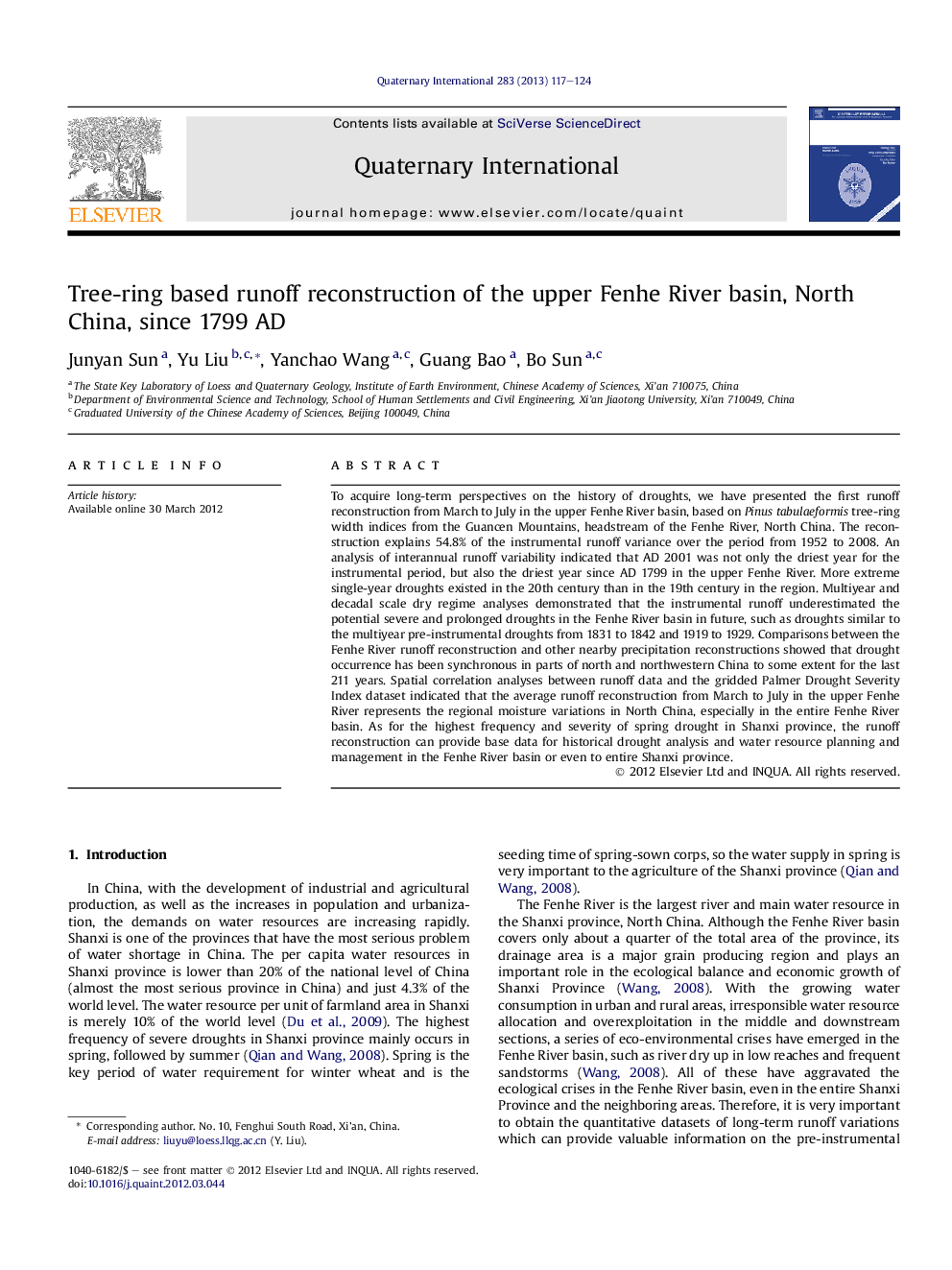| Article ID | Journal | Published Year | Pages | File Type |
|---|---|---|---|---|
| 1042278 | Quaternary International | 2013 | 8 Pages |
To acquire long-term perspectives on the history of droughts, we have presented the first runoff reconstruction from March to July in the upper Fenhe River basin, based on Pinus tabulaeformis tree-ring width indices from the Guancen Mountains, headstream of the Fenhe River, North China. The reconstruction explains 54.8% of the instrumental runoff variance over the period from 1952 to 2008. An analysis of interannual runoff variability indicated that AD 2001 was not only the driest year for the instrumental period, but also the driest year since AD 1799 in the upper Fenhe River. More extreme single-year droughts existed in the 20th century than in the 19th century in the region. Multiyear and decadal scale dry regime analyses demonstrated that the instrumental runoff underestimated the potential severe and prolonged droughts in the Fenhe River basin in future, such as droughts similar to the multiyear pre-instrumental droughts from 1831 to 1842 and 1919 to 1929. Comparisons between the Fenhe River runoff reconstruction and other nearby precipitation reconstructions showed that drought occurrence has been synchronous in parts of north and northwestern China to some extent for the last 211 years. Spatial correlation analyses between runoff data and the gridded Palmer Drought Severity Index dataset indicated that the average runoff reconstruction from March to July in the upper Fenhe River represents the regional moisture variations in North China, especially in the entire Fenhe River basin. As for the highest frequency and severity of spring drought in Shanxi province, the runoff reconstruction can provide base data for historical drought analysis and water resource planning and management in the Fenhe River basin or even to entire Shanxi province.
